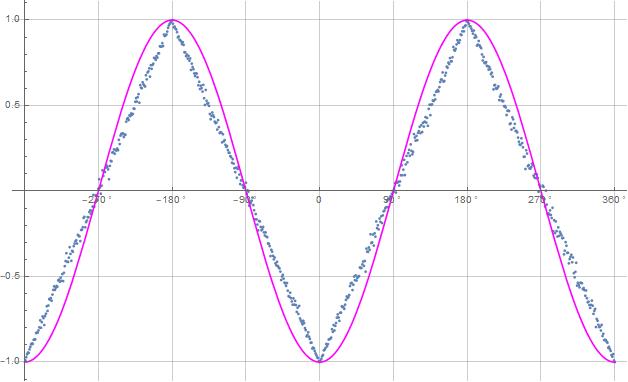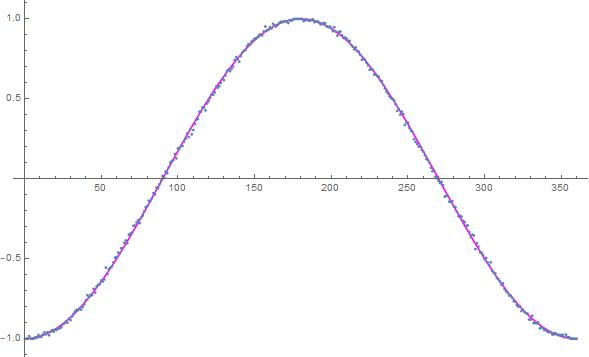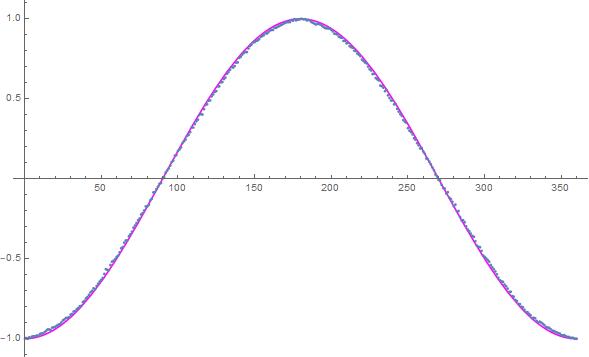jreed wrote:I agree with you. In the version I'm using, all events are detected. I did 1,000,000 trials, and 835,710 went into the a detector, 164,290 into the ar detector. None are missing. It's not the detection loophole. I get similar results with lambda set at a constant 0.22. You may have discovered a new loophole, or maybe a disproof of Bell's theorem. It's very interesting.
Well, Bell's theory is already disproven. You did disproved it yourself with your quaternion simulation which I later enhanced to use 3D vectors and a quaternion singlet. This is a conspiracy loophole to Gill's theory. Upon further analysis when I set ar and br to 0 so that all of the constraint events are piling up at theta = 0 and cancelling out we of course get the nice negative cosine curve for 3 million events at one degree resolution,

Then when I set a and b to 0 so that all the non-constraint events are piling up at theta = 0 and cancelling out we get,

the straight lines. A possible conclusion from this is that when straight line events are mixed with the negative cosine events, you still end up with the negative cosine curve. I think we might need a math wizard for this.
.



